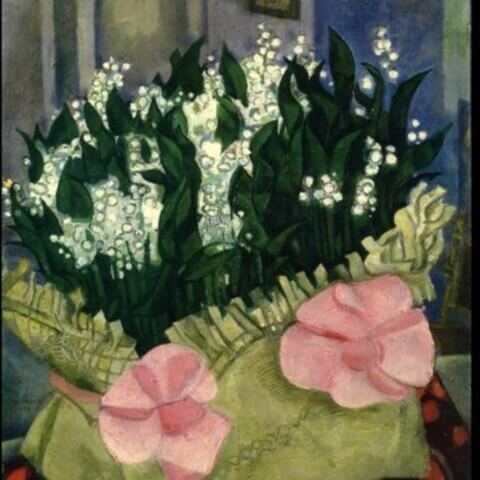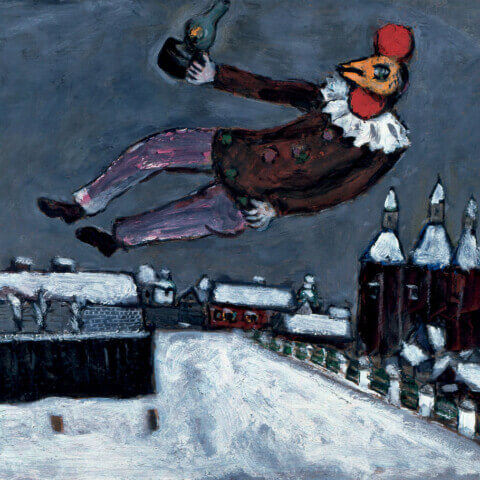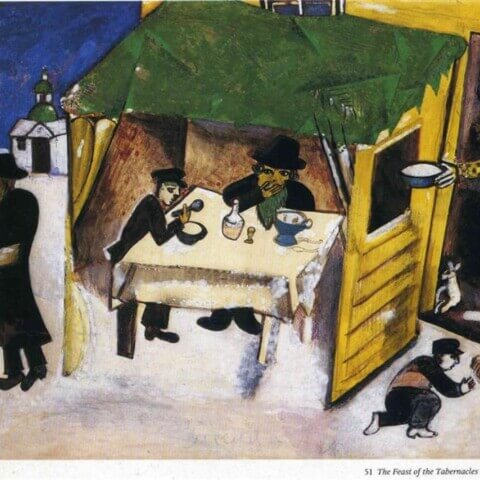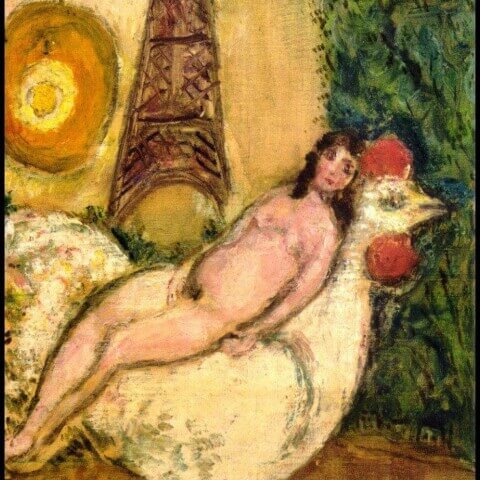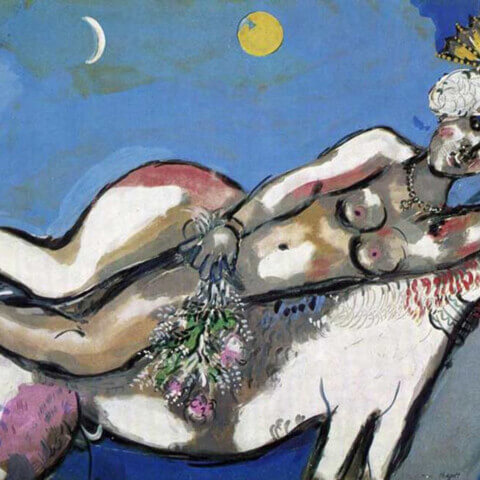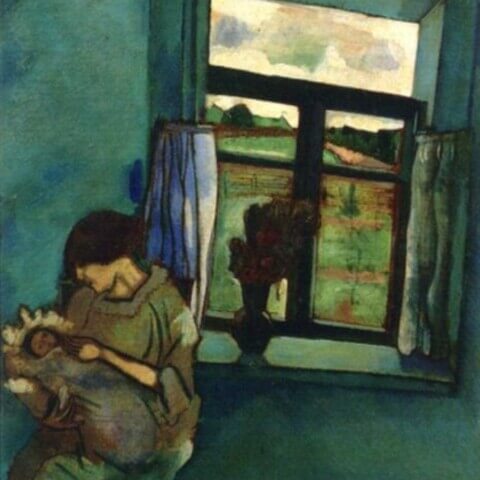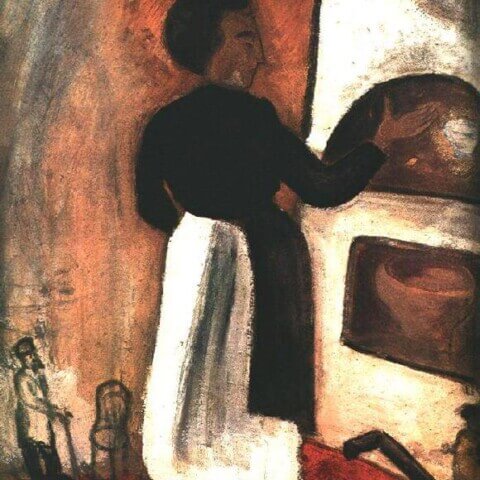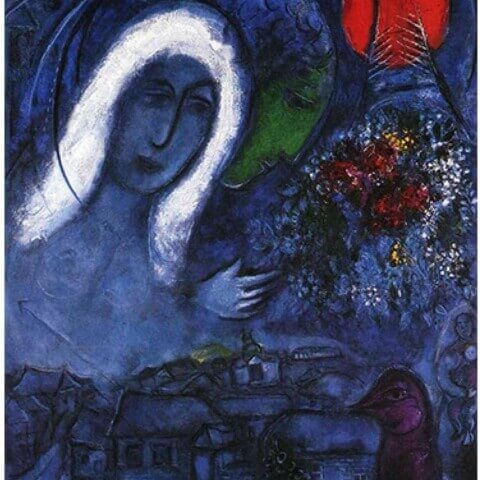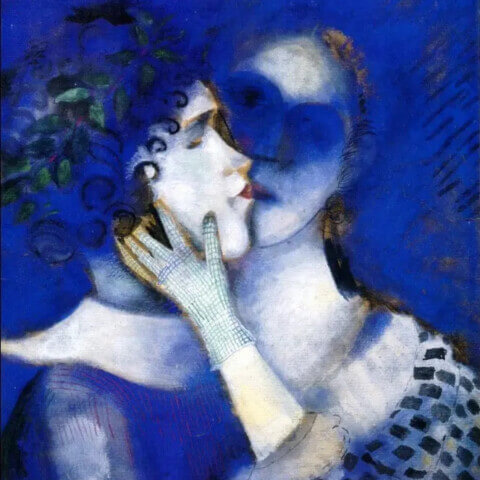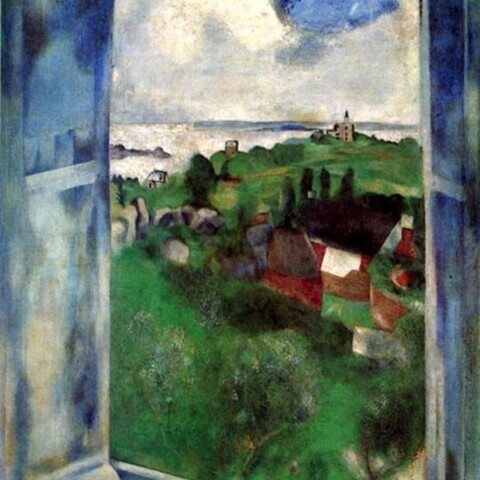Marc Chagall
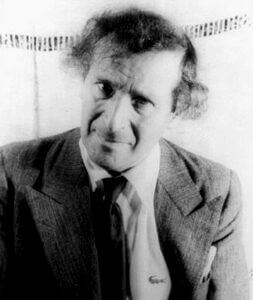
Marc Chagall (1887–1985) was a pioneering modernist artist whose unique style blended elements of Symbolism, Fauvism, Cubism, and Surrealism, as well as influences from his Jewish heritage and the Russian folklore of his native Vitebsk. Often weaving together reality, memory, and dreams, his imaginative works are famous for their vibrant use of color, intricate patterns, and otherworldly compositions.
Born in Belarus to a humble Jewish family, Chagall displayed an early passion for art, overcoming societal and financial obstacles to study under the renowned Russian stage designer and painter Leon Bakst in St. Petersburg. In 1910, Chagall moved to Paris, where he quickly became a part of the city’s avant-garde circles. Here, his work began to embody the various influences of the city’s bustling art scene.
Chagall’s style is most notable for its dream-like, fantastical elements. He often depicted scenes from his childhood, combined with themes of love, nostalgia, and loss. Figures in his paintings – humans, animals, and even houses – often float freely, unencumbered by the laws of gravity. His best-known painting, “I and the Village” (1911), exemplifies his style, showcasing a dreamy and poetic visualization of his childhood memories.
The Jewish culture and traditions, deeply rooted in Chagall’s upbringing, figured prominently in his work. He painted numerous representations of Jewish life and folklore, contributing significantly to Jewish art. His stained-glass windows for the synagogue of the Hadassah University Medical Center in Jerusalem are considered some of the most important contributions to twentieth-century religious art.
Throughout his long and productive career, Chagall produced not only paintings, but also illustrations, ceramics, stained glass windows, stage sets, tapestries, and prints. Despite the tragedy and turmoil of the times in which he lived, including two World Wars and the persecution of Jews during the Holocaust, Chagall’s work is imbued with a profound optimism and a ceaseless ‘joie de vivre’. His rich artistic legacy continues to inspire and captivate audiences worldwide.
Marc Chagall died on March 28, 1985, in Saint-Paul-de-Vence, France. His work has been exhibited and collected internationally, and his unique contribution to the modern art movement remains celebrated to this day.

